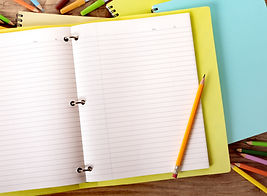
BACK to SCHOOL
Start Carbon-Cutting Lessons Early

If They Can Walk Safely, Let Them
Kids who can walk to school gain an academic edge. Walking gives their brains an oxygen boost, improving their ability to focus. Not ready to let them walk by themselves? Could a parent escort them, even one way and they could take the bus the other? Or consider creating a "walking school bus," wherein neighbor parents take turns escorting the kids to school, a la carpools.

If They Can't Walk, Let Them Ride the Bus
Unless your children are particularly vulnerable to COVID, consider letting them ride the bus as often as extra curricular activities allow. They'll get to hang out more with friends. You'll cut your carbon footprint and help your kids to learn to be responsible for staying on schedule. Older kids can ride TARC for a discounted fare of $0.75 each way.

Turn Off Your Engine While Waiting
If you need to drive your kids to and from school, please turn off your engine as you wait in line to drop them off or pick them up. You'll save money and wear-and-tear on your engine, and leave cleaner air for all kids to breathe. Learn more about cleaner air at schools, here.

Stick to the School's List
It's nearly impossible to do back-to-school shopping without seeing a little kid crying or a teenager pouting over not getting something they want. We won't pretend to know how to avoid such reactions. But we note that sticking to the school's list helps, saves money and keeps unneeded stuff out of the landfill. Have gently used backpack, outgrown school uniforms, etc.? Donate them to a school's family resource center for another child.

Avoid Plastic and Single-Use Disposables
Consider choosing wooden pencils or refillable mechanical pencils over plastic, single-use mechanical pencils. Buy pencils made in the US, rather than Brazil, China, Indonesia and other tropical countries to avoid wood from tropical rainforests. Choose pens that can be refilled with new cartridges and used again. Get more waste reduction tips.

Buy Recycled Paper and Notebooks
School paper and notebooks sometimes are made of pulp from tropical rainforest trees. Like pencils, try to avoid paper from Brazil, China, Indonesia and other tropical locations. Get more waste reduction tips.

Buy Art Supplies Made With Solar Power
Check the boxes and choose crayons made in US factories powered by the sun. Buy sustainably-sourced colored pencils, ideally not from Brazil, China, Indonesia and other tropical locations. Buy plastic markers only if required by the school.

Avoid Single-Use Lunch Packaging
If your kids are packing their lunches, provide them with reusable lunch boxes or bags, sandwich boxes and a few leak-proof containers for fruit salads, soup or whatever. If they outgrow a lunch box, offer it to the school family resource center. Get more waste reduction tips.

Tips for Dorm Dwelling Students
Even when you're living away from home, there are still lots of ways to reduce your carbon footprint. Explore LCAN's Energy Efficiency Tips for Dorm Dwellers.
